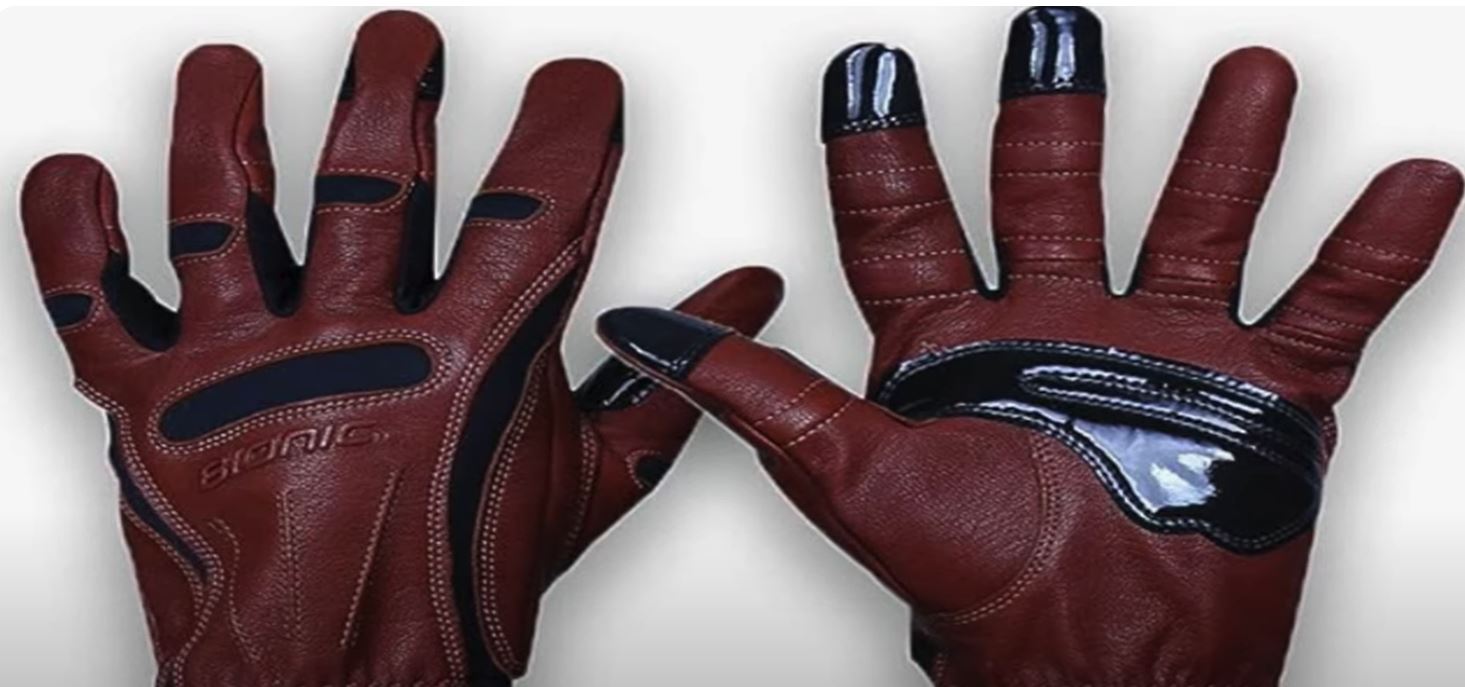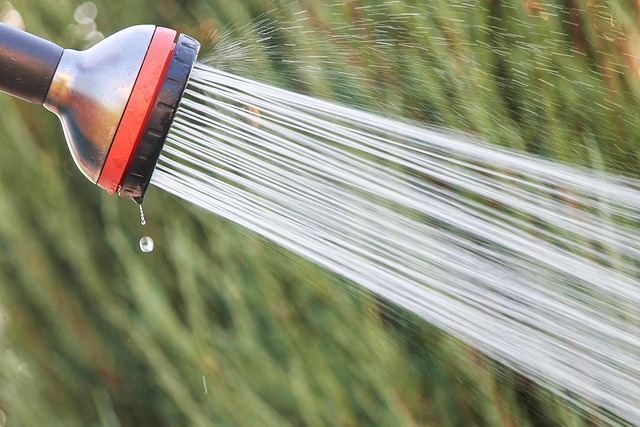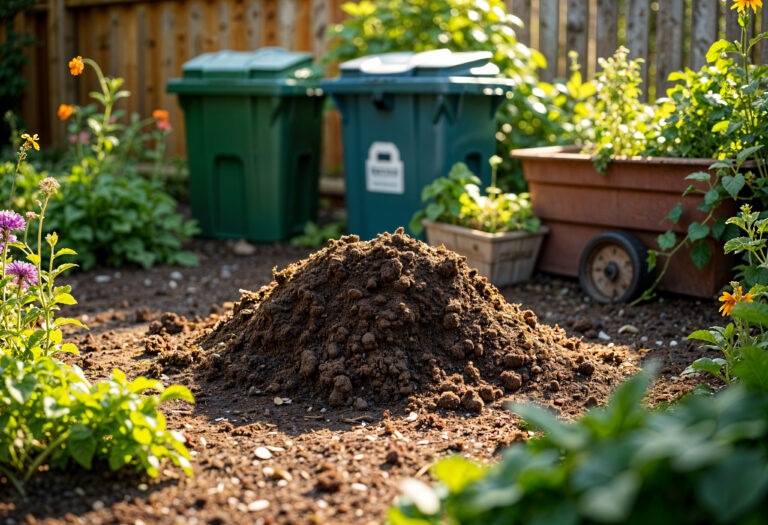5 Best Heavy Duty Gardening Gloves
For many gardeners, the simple act of digging into the earth is a source of joy. But for those of us who go beyond the simple planting of annuals, gardening can be a physically demanding, even punishing, activity. If your garden includes thorny roses, jagged cacti, or sharp, woody branches from fruit trees, a pair of lightweight cotton gloves just won’t cut it. Similarly, when you’re wrestling with heavy tools like a pickaxe to break up rocky soil or moving rough stones for a new path, your hands are at serious risk. These are the moments when heavy-duty gloves stop being a convenience and become an absolute necessity.
I know this from personal experience. For years, I went through cheap, flimsy gloves as if they were disposable tissues. I would buy multi-packs of canvas or thin-leather gloves at the start of every season, and by mid-summer, they would be riddled with holes, frayed seams, and worn-out fingertips. I was tired of coming inside with dirt caked under my nails, splinters embedded in my palms, and pinpricks from rose thorns on my fingers. My hands were a constant reminder of the abuse they were taking, and it was a cycle that had to stop.
That’s when I realized that investing in a quality pair of heavy-duty gloves was not a luxury, but a form of self-care for any serious gardener. I decided to change my approach and start testing gloves that were specifically designed for tough jobs. The promise of this analysis is simple: this list isn’t based on marketing claims or specs on a box. It’s based on real-world use, putting these gloves through their paces in the kinds of environments and tasks that push them to their limits. This is a review written for the gardener who isn’t afraid to get their hands dirty and who wants to protect them while doing it.
Firm Grip General Purpose Gloves

Key Features: These gloves are constructed with a durable synthetic leather palm and feature a breathable mesh backing. A standout feature is the inclusion of touchscreen-compatible fingertips on the thumb and index finger, a rarity in this category.
Personal Test: I used these gloves extensively for common gardening chores, particularly weeding and raking. The synthetic leather offered a surprising amount of protection without feeling stiff or bulky. I could easily grasp weeds and roots, and the gloves didn’t restrict my finger movement. The breathable mesh on the back of the hand was a huge plus, keeping my hands from getting sweaty even during a long, warm morning. The touchscreen fingertips were a game-changer; I could use my phone to check my plant identification app or answer a quick text without having to take my gloves off, which is a major convenience when your hands are covered in dirt.
Best For: These are the perfect all-around gloves for the home gardener. They provide an excellent balance of protection, comfort, and modern convenience. They’re ideal for routine tasks like weeding, planting, and raking, but can also handle slightly tougher jobs.
Pros and Cons:
- Pros:
- Versatile: Great for a wide range of everyday gardening tasks.
- Comfortable: Breathable mesh keeps hands cool and dry.
- Convenient: Touchscreen-compatible fingertips work reliably.
- Flexible: The synthetic leather provides good dexterity.
- Cons:
- Limited Protection: Not ideal for very thorny plants or sharp materials.
- Not Thorn-Proof: Thorns from roses or blackberries can still penetrate the material.
Grippy Garden Gloves (2 Pairs)

Key Features: This is a budget-friendly option, typically sold in a two-pack. They feature a thin, seamless knit liner with a thick, water-resistant nitrile or latex coating on the palms and fingers.
Personal Test: I primarily used these gloves for tasks involving water and soil, such as watering plants with a hose or digging in damp soil. The water-resistant coating performed well, preventing my hands from getting soaked. The textured palm provided a solid grip on wet tools, which was a significant advantage. However, I found that the finger sizing was slightly long, which reduced dexterity on more precise tasks. Despite the slight fit issue, the gloves successfully kept dirt from soaking through to my skin, and after a few hours of use, they were still in good shape.
Best For: These gloves are a fantastic entry point for new gardeners or anyone on a budget. Their low cost and water resistance make them great for general-purpose tasks like digging, planting in damp soil, and weeding in a wet garden bed. They’re also perfect for households where gloves tend to get lost.
Pros and Cons:
- Pros:
- Affordable: Excellent value for the price, especially as a two-pack.
- Water-Resistant: Keeps hands dry in wet conditions.
- Strong Grip: The textured coating provides a firm hold on tools.
- Easily Replaceable: The low cost means you won’t worry about them wearing out.
- Cons:
- Poor Fit: The one-size-fits-most design can lead to long fingers and reduced dexterity.
- Less Durable: The thin liner can tear more easily over time.
Ansell HyFlex 11-600 Nylon Gloves

Key Features: These gloves are known for being incredibly lightweight and having a form-fitting nylon shell with a polyurethane palm coating. They are designed for precision tasks where dexterity is paramount.
Personal Test: The moment I put on these gloves, I was impressed by their snug, second-skin-like fit. I used them for delicate tasks like repotting herbs and separating the delicate roots of seedlings. I had a level of precision that felt almost like working with bare hands. The polyurethane palm coating provided just enough grip without feeling sticky or bulky. On a particularly hot afternoon, the breathable nylon fabric lived up to its promise, keeping my hands completely sweat-free. Unlike other gloves, these were so comfortable that I completely forgot I was wearing them.
Best For: These are the gloves for the detail-oriented gardener. They are ideal for tasks that require a high degree of precision, such as pruning bonsai, working with small seedlings, or doing any job where you dislike the feeling of bulky gloves.
Pros and Cons:
- Pros:
- Superior Dexterity: The snug fit allows for fine motor skills.
- Extremely Lightweight: Feels like a second skin, very comfortable for long periods.
- Highly Breathable: Prevents hands from sweating in warm weather.
- Cons:
- Minimal Protection: Not suitable for thorns, sharp branches, or heavy tools.
- Not Water-Resistant: Will not keep your hands dry in wet soil.
Bionic Tough Pro Natural Fit Gloves

Key Features: This is a premium-level glove, constructed with high-quality leather. It includes specialized features like extra padding on the palms for grip and vibration absorption, as well as vented knuckle seams to reduce hand fatigue.
Personal Test: I saved these gloves for the toughest jobs, including lifting heavy landscaping rocks and trimming large, woody shrubs with a pair of loppers. The moment I grabbed a tool, I could feel the difference. The extra palm padding significantly reduced the hand fatigue and vibration I normally experience when using heavy tools. The vented seams on the knuckles helped keep the gloves from feeling too warm and restricted, allowing me to wear them for a long time without discomfort. The leather held up perfectly against rough, abrasive surfaces and splintery wood.
Best For: These gloves are an investment for professional landscapers or serious gardeners who spend hours on heavy-duty tasks. They are built for durability and comfort under extreme conditions.
Pros and Cons:
- Pros:
- Maximum Durability: The premium leather is highly resistant to abrasion and punctures.
- Reduced Hand Fatigue: Extra padding absorbs vibration from heavy tools.
- Superior Grip: The textured pads provide a strong, non-slip hold.
- Cons:
- Pricey: This is a significant investment compared to other gloves.
- Less Dexterity: The thick leather makes it difficult for fine, precise tasks.
Magid Professional Rose Pruning Gloves

Key Features: These gloves are a specialty item, designed specifically for one job: protecting you from thorns. They feature thorn-proof synthetic leather palms and an extended gauntlet-style length to protect the forearm. The back of the hand is a breathable spandex.
Personal Test: This was the easiest glove to test. I wore them while pruning a very thorny climbing rose bush, and not a single thorn managed to get through the reinforced palm and fingers. The extended cuff was invaluable, protecting my forearms from scratches and scrapes as I reached into the dense bush. However, the spandex on the back of the hand, while breathable, felt less protective. While no thorns got me there, I was careful to avoid the backs of my hands touching the rose canes.
Best For: These are an essential tool for any rose lover, as well as landscapers who frequently deal with spiky shrubs, cacti, or other thorny plants.
Pros and Cons:
- Pros:
- Unmatched Thorn Protection: The thorn-proof palm and fingers work perfectly.
- Extended Arm Protection: The long gauntlet keeps forearms safe from scratches.
- Breathable: The spandex back keeps hands from getting too hot.
- Cons:
- Specialized Use: Not great for general tasks due to their bulk and lack of dexterity.
- Back of Hand Vulnerability: The spandex material is not as protective as the palm.
How We Tested the Gloves
Our testing methodology was designed to simulate the varied and challenging conditions a gardener might face throughout a season. We didn’t just wear the gloves for a few minutes; we subjected them to a rigorous, two-week trial period across multiple sessions, ensuring that we captured their performance not just on a single day, but over time.
Testing Environment:
To ensure our results were comprehensive and applicable to different types of gardening, we tested the gloves in three distinct environments, each presenting unique challenges:
- A Backyard Garden: This was our baseline environment. Here, we performed everyday tasks like weeding, planting, and deadheading flowers. The soil was a relatively soft loam, but the presence of rose bushes and thorny blackberry vines provided the perfect test for puncture resistance.
- A Community Plot: This environment introduced more variability. We dealt with a variety of soil types, from sandy to clay-heavy, and had to use heavier-duty tools like shovels and digging forks to prepare new beds. This allowed us to evaluate how the gloves performed with repetitive, tool-based tasks.
- Landscaping Projects: This was the ultimate test of “heavy duty.” We used the gloves for tasks that went beyond typical gardening, including clearing new land, moving rough stones, and handling large, splintery tree branches. This environment allowed us to push the gloves to their absolute limit in terms of durability and abrasion resistance.
Testing Tasks:
Across these environments, we performed a consistent set of tasks to evaluate each glove’s performance. Every task was chosen to isolate and test specific aspects of the gloves’ design:
- Weeding: This tested dexterity and grip. We pulled both small, stubborn weeds and larger ones with deep root systems, paying attention to how well the gloves allowed us to feel and grasp the plants without compromising protection.
- Pruning Roses: The quintessential test for thorn-proof gloves. We used both handheld pruners and loppers, but the main test was simply handling rose canes to see if any thorns could penetrate the material. We specifically looked for materials like goatskin, which is known for its combination of flexibility and puncture resistance.
- Digging and Shoveling: This was a key test of durability and padding. We used shovels and spades to turn soil, and we paid attention to how well the gloves absorbed the vibrations and pressure, looking for signs of blisters or hot spots on our hands after extended use. This also tested the gloves’ grip strength, particularly with wet soil or tool handles.
- Handling Heavy Tools: Beyond shovels, we used axes and pickaxes for landscaping tasks. This tested the gloves’ ability to provide a secure grip on heavy, vibrating tools, protecting against calluses and fatigue.
- Planting: For this task, we needed a balance between protection and dexterity. We planted both small seedlings and larger shrubs, assessing whether the gloves allowed for the fine motor skills required to handle delicate root balls without damaging them.
Key Criteria for Evaluation:
We evaluated each pair of gloves against a strict set of criteria, each one a critical factor in a glove’s overall performance.
- Comfort and Fit: The most immediate and personal criterion. A glove, no matter how durable, is useless if it’s uncomfortable. We wore each pair for at least 1–2 hours straight, often more. We looked for a snug, yet non-restrictive fit, paying attention to the feel of the seams inside the gloves and whether there was any bunching or rubbing, particularly around the knuckles and fingers. We also noted how the gloves conformed to the hand over time, as materials like leather tend to break in and improve with use.
- Durability: This was the true measure of a “heavy-duty” glove. We closely inspected each glove after every session, looking for signs of wear and tear. We specifically checked for tears in the palm and fingertips, which are common failure points in lesser gloves. We also assessed their resistance to pricks from thorns and splinters, and whether the material held up to the constant friction of handling rough soil and tools. Our search revealed that modern gloves often use reinforced materials like Kevlar or SuperFabric, which provide a high level of cut and puncture resistance, a major step up from traditional leather.
- Grip Strength: A glove’s grip is crucial for both safety and efficiency. A poor grip can lead to tools slipping from your hands, increasing the risk of injury. We tested this with both dry and wet tools, and on materials with different textures, such as slick shovel handles and rough, knotty tree branches. We found that gloves with textured nitrile or rubberized palms provided superior grip, especially in wet conditions, compared to smooth leather.
- Breathability: Extended use can lead to sweaty, clammy hands, which can be uncomfortable and even lead to skin irritation. We paid close attention to how our hands felt after a long period of use. Gloves with breathable mesh or spandex backs and porous palm coatings, such as those made with foam nitrile, tended to perform best, allowing for air circulation and preventing excessive sweating. This is a key ergonomic feature that separates a good glove from a great one.
- Specialty Features: Finally, we tested the unique features that set some gloves apart. The most notable of these were touchscreen compatibility and water resistance. Touchscreen-compatible fingertips were a game-changer, allowing us to quickly check a planting guide on a phone or answer a call without having to remove our gloves and risk getting dirt everywhere. For water resistance, we purposefully worked with damp soil to see if our hands stayed dry. We also evaluated thorn-proof features, specifically for rose gloves, which often include extra-long gauntlets to protect the forearms, a critical feature for anyone dealing with thorny bushes.
Our two-week testing period, comprising multiple sessions ranging from 30 minutes to two hours, provided a comprehensive and realistic assessment of each glove’s performance. By applying these rigorous criteria across varied environments and tasks, we were able to move beyond surface-level reviews and truly understand which gloves were built to handle the demands of serious gardening.
The Ultimate Buying Guide: Choosing Heavy-Duty Gardening Gloves
Choosing the right pair of gardening gloves can feel overwhelming with so many options available. Beyond just the look, there are several key factors to consider that will determine how well the gloves perform for your specific needs. Understanding these features will help you find a pair that feels custom-made for your hands and your tasks.
Material Matters
The material of a glove is the primary factor in its durability, flexibility, and level of protection.
- Leather: Leather is the classic choice for a reason. It’s incredibly durable and resistant to punctures and abrasion, making it ideal for heavy-duty jobs like moving rocks, trimming thorny bushes, and using power tools. It molds to your hand over time for a personalized fit, but it can be less breathable and may stiffen when wet.
- Synthetic Leather: A great alternative to traditional leather, synthetic leather offers a balance of durability and flexibility. It’s often more affordable, water-resistant, and requires less break-in time. While not as puncture-proof as thick leather, it’s a solid choice for general-purpose tasks.
- Nylon and Spandex: These are the materials of choice for lightweight, breathable gloves. Nylon offers a snug, form-fitting feel, while spandex provides stretch and flexibility. These materials prioritize dexterity and comfort for precision work, but they offer minimal protection against thorns or sharp objects.
- Nitrile or Latex Coating: Often found on budget-friendly gloves, nitrile or latex coatings provide a water-resistant layer and an excellent grip. They’re perfect for working in damp soil and keeping your hands clean, but they can wear away over time and don’t offer much protection against sharp objects.
The Importance of Fit
A snug fit is arguably the most crucial factor for a comfortable and effective glove. A glove that’s too loose can lead to reduced dexterity, making it difficult to perform precise tasks like pulling small weeds or handling seedlings. More importantly, a poor fit can cause blisters as your skin rubs against the excess material. A snug, form-fitting glove acts like a second skin, giving you better control and reducing the risk of hand fatigue and injury.
Protection: More Than Just the Palm
When you think about a glove, you might just think about protecting your palm, but there’s a lot more to it. Look for gloves with these key protective features:
- Thorn-Proof Design: If you’re dealing with roses, blackberries, or any other thorny plants, a thorn-proof palm and fingers are non-negotiable. This usually means a reinforced, puncture-resistant material in these areas.
- Padded Palms: Gloves designed for use with heavy tools, like the Bionic Tough Pro, often have padded palms. This extra padding absorbs vibration and shock, which significantly reduces hand fatigue and prevents blisters during long work sessions.
- Water-Resistance: While not essential for all tasks, water-resistant gloves can be a lifesaver when working in damp soil or using a hose. They keep your hands dry and clean, which adds to your overall comfort.
Comfort is Key
A comfortable glove is one you’ll actually wear. Beyond fit, look for these features:
- Breathable Fabrics and Venting: Mesh backs, vented seams, and breathable materials like nylon allow air to circulate, preventing your hands from getting sweaty and clammy.
- Moisture-Wicking Technology: Some gloves are designed to pull sweat away from your skin, keeping your hands dry and comfortable even on the hottest days.
Price vs. Durability
It’s tempting to go for the cheapest option, but with gardening gloves, you often get what you pay for. A more expensive glove, like the Bionic Tough Pro, is an investment in durability and specialized features that will last for years. If you’re a serious gardener who spends hours a week on tough jobs, a premium glove can save you from blisters, hand fatigue, and the need to constantly replace cheaper pairs. For a casual gardener, a multi-pack of budget-friendly gloves might be the more practical choice.
Extra Features
Modern gloves offer features that enhance convenience and functionality. Touchscreen-compatible fingertips are a game-changer for gardeners who use their phones for plant identification or to stay connected. Extended cuffs, like those on the rose pruning gloves, provide crucial protection for your forearms. Reinforced stitching and finger seams add to a glove’s overall longevity.
Comparison Table
| Glove Name | Best For | Protection Level | Dexterity | Price Point |
|---|---|---|---|---|
| Firm Grip General Purpose | All-around home gardening, weeding, raking | Moderate | Good | Affordable |
| Grippy Garden Gloves | Budget-conscious gardeners, wet tasks | Low to Moderate | Fair | Budget |
| Ansell HyFlex 11-600 Nylon | Precision tasks, potting, delicate plants | Low | Excellent | Moderate |
| Bionic Tough Pro Natural Fit | Heavy-duty tool use, professional tasks | High | Fair | Premium |
| Magid Professional Rose Pruning | Thorn-heavy plants, rose bushes, cacti | Excellent | Low | Moderate |
Frequently Asked Questions
Q: How do I clean my gardening gloves? A: The cleaning method depends on the material. Leather gloves should be wiped clean with a damp cloth and then air-dried away from direct heat to prevent them from becoming stiff. Synthetic, nylon, or coated gloves can often be washed with mild soap and water. Always check the manufacturer’s instructions for the best results.
Q: What’s the difference between a nitrile and a latex glove coating? A: Nitrile is a synthetic rubber and a great choice for those with latex allergies. It’s known for its resistance to oils, punctures, and chemicals, making it a very durable choice. Latex is a natural rubber and offers excellent dexterity and grip, but it’s not as resistant to oils or punctures.
Q: Why do my hands still get sweaty in breathable gloves? A: While breathable gloves allow air to circulate, they aren’t completely immune to sweat. The key is to choose a glove with moisture-wicking properties and to take occasional breaks in warm weather to allow your hands to air out. The temperature of the material and your individual body heat also play a big role.
Final Verdict and Personal Recommendation
After extensive testing, it’s clear that the best glove is the one that’s right for the job.
- For the everyday gardener who wants one glove that can do it all, the Firm Grip General Purpose Gloves are the standout choice.
- For a beginner or someone on a budget who just needs a reliable, no-frills option, the Grippy Garden Gloves 2-pack offers unbeatable value.
- If your gardening style is all about precision and detail, the Ansell HyFlex Nylon Gloves are unmatched in dexterity and comfort.
- For the toughest tasks and for those who use heavy tools, the Bionic Tough Pro Natural Fit Gloves are worth the investment.
- And finally, for anyone who dares to tackle thorny plants, the Magid Professional Rose Pruning Gloves are a lifesaver.
Personally, I’ve found the most success by having a small collection of gloves for different purposes. I rely on the Bionic Tough Pro for any heavy lifting or prolonged tool use, as it’s saved me from countless blisters and hand fatigue. For rose work and other thorny situations, the Magid Rose Pruning Gloves are my go-to. They’ve genuinely saved me from countless scratches and made those jobs far more manageable.
What gloves do you rely on for tough gardening jobs? Share your favorites so we can compare experiences.







